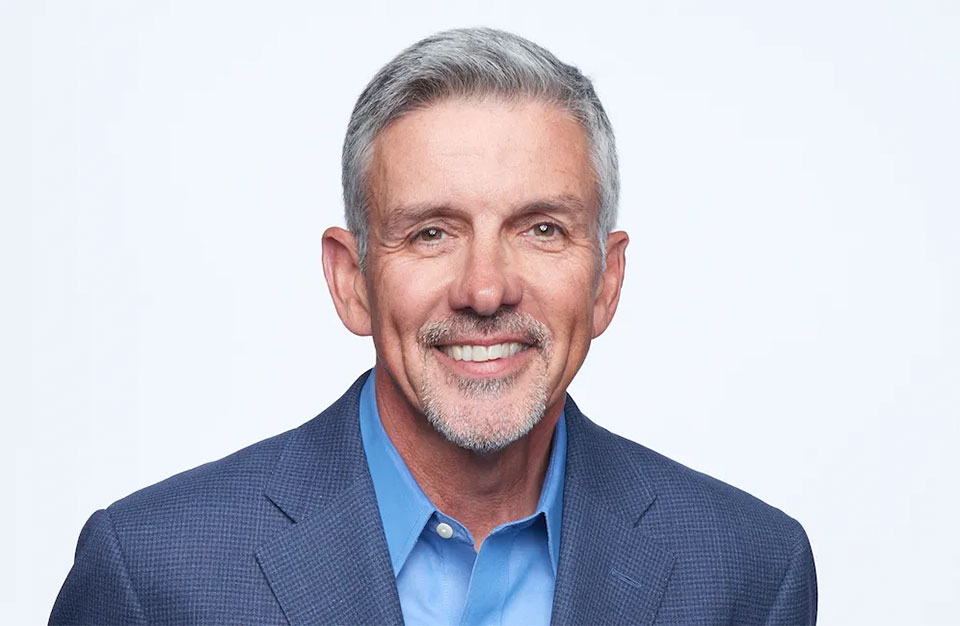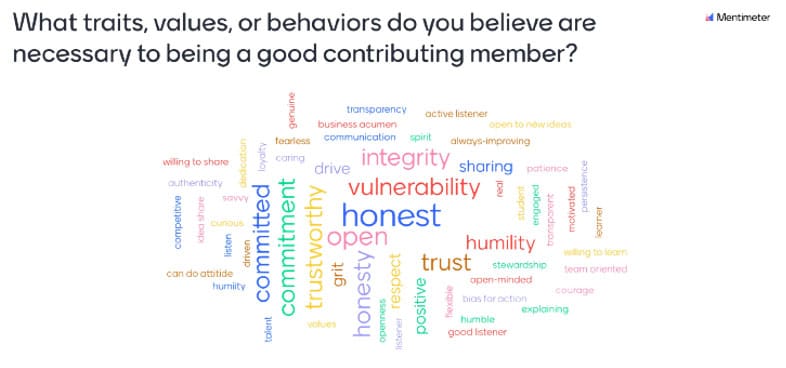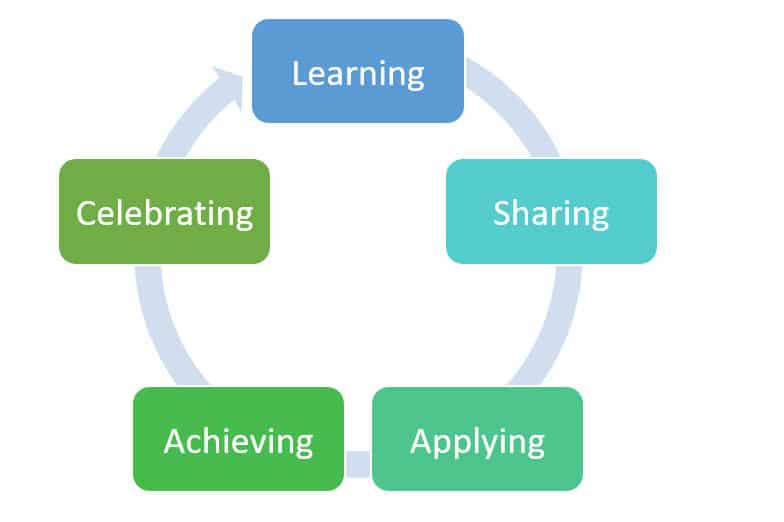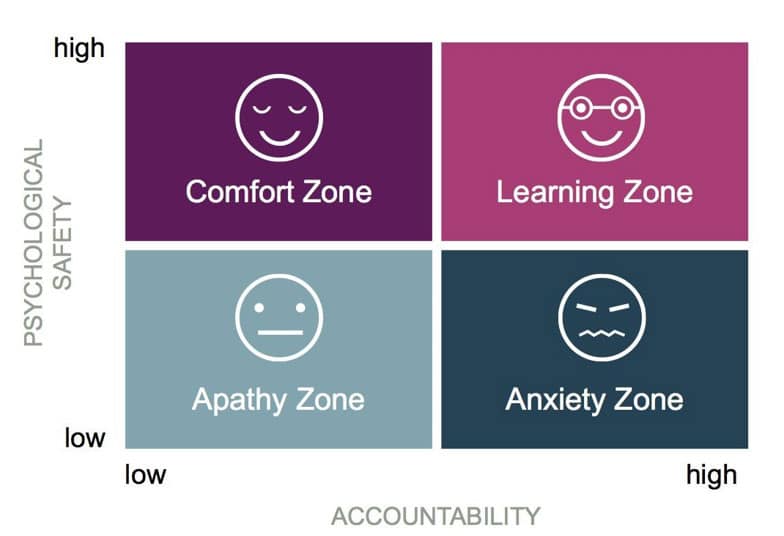The 1-2-3 of Psychological Safety

I begin the workshop portion of my half-day Peernovation program by asking: What does it take to be a valuable contributor to your team? Not just any team, your team. I ask the question that way for a reason, as I want everyone to feel a sense of ownership from the start of our session. It’s not the company’s or the leader’s team; I want everyone to see it as “MY TEAM.” The participants will then contribute two to three essential values and behaviors to a word cloud, and after everyone has weighed in, I’ll ask, “Is there anything missing?” It’s not a trick question, just an opportunity for the team members to fill any gaps that may be remaining after the initial go-around. After they add a few more ideas, here’s a typical result:

The word cloud paints a picture of what being a good teammate looks like. It reinforces what the team members expect of themselves, what they envision from their fellow team members, and what they would require of any new employee who wants to enjoy the privilege of being on THEIR team. After looking at the words, it should also be evident that nearly all of them – indeed all the larger ones – speak squarely to psychological safety. That said, expectations are one thing; realizing those expectations is quite another.
Three Keys to Realizing Expectations for Psychological Safety
My extensive work with high-performing CEO peer advisory groups and organizational teams has helped me identify three keys to realizing expectations for psychological safety. I note these keys at the risk of ignoring e.e. cummings’ warning that “all ignorance toboggans into know.” Cummings asserted that we strive for ignorance (by simplifying a complicated topic) only to slide down to knowledge (when people identify other factors) that transcend such simplification. Consider them three keys, not the only keys, so feel free to add your own if you like.
- Great teams have a robust Learning-Achieving Cycle.
We learn and grow better when we do so together. Why? Because we can engage one another in a fashion that leads to a reinforcing loop of learning, sharing, applying, achieving, and celebrating. Learning and sharing our knowledge deepens our understanding and gives us the confidence, courage, and encouragement to act. Once we apply what we’ve learned and achieve positive results, we take time to celebrate because it will inspire us to learn more and improve as a team more quickly. (Click here to explore The Power of Celebration). Think of a sports organization that wins championships and consistently participates in the playoffs. Believe it or not, those organizations don’t think of winning the titles as their goal; they see it as the reward for focusing on their real goal – The Learning-Achieving Cycle – on getting better every day. When they do that, they put themselves in a position to win. Your team must be committed to the process and open to learning and growing. For this to happen, psychological safety among team members is essential.
The Learning–Achieving Cycle - Great teams accept shared responsibility for the outcome.
As I covered a few weeks ago in my piece, Unite and Conquer, the leader of a team must be a part of the team, not apart from it. When you’re fundamentally all in it together, the likelihood of a blame culture prevailing (especially during challenging times) is lessened. What’s more, the leader, the team, and each member accept shared responsibility for the result, whether that relates to productivity, accountability, or team psychological safety. So you hold up the result together.
The Team Triad - Great teams understand that psychological safety and accountability are symbiotic.
I often hear from CEOs that they can’t get their head around focusing on psychological safety when they are accountable for achieving results. They think of psychological safety and creating a culture of accountability as somehow mutually exclusive. There’s nothing further from the truth.Consider this example: a CEO approached me during a workshop break and stated that one of his direct reports wasn’t taking ownership of his role. Two other CEOs in the group, who were within earshot of the comment, started to snicker. So, I asked, “Okay, what’s going on here? Fill me in.” So, one of the CEOs explained that his fellow member’s direct report wasn’t taking ownership of his department because he was scared to death of how his boss would respond if he ever messed up. Together, we explained that until his direct report felt psychologically safe, he would never take ownership of his department. Psychological safety and a healthy culture of accountability are not opposing forces; they are necessary allies.

Harvard Business School’s Amy Edmondson gave us a gift by providing a 2×2 that eloquently illustrates the power of this symbiotic relationship. If psychological safety is high, without much accountability focus, employees will operate in the Comfort Zone. If both psychological safety and accountability are low, employees will live in the Apathy Zone. (In the book Tribal Leadership, the authors assert that a Stage 2 culture, called the “my life sucks” culture, includes people whose only aspiration is to do just enough to avoid being fired by the end of the week). That’s where these employees live. When there is little to no psychological safety, yet the employees are under constant pressure for results, they live in the Anxiety Zone. Finally, when employees feel high levels of psychological safety and challenged with a high degree of healthy accountability, these employees live in the Learning Zone – home to the Learning-Achieving Cycle and the Team Triad.
As Google’s Project Aristotle concluded many years ago, psychological safety is essential for any high-performing team. It’s what unlocks the intellectual and emotional capital of a team’s members and truly creates a whole that’s greater than the sum of its parts. So it’s about time that your team operates in the Learning Zone. Start by committing to the Learning–Achieving Cycle, adopting the Team Triad, and recognizing that psychological safety is necessary to create a healthy accountability culture. Not easy, perhaps, but as simple as 1-2-3.
Have you read?
These are the countries with the Highest Average Salaries, 2022.
International Financial Centers Ranking, 2022.
How to Create More Efficient Workflows Within Your Organization by Rhett Power.
Social Responsibility vs Marketing: The corporate struggle to do both by Fotis Pantopoulos.
Keep your Employees Happy: Employee Engagement & Experience by Stuart Andrews.
How Fractional Sales Management Can Help Your Small Business by Dan Hurt.
Bring the best of the CEOWORLD magazine's global journalism to audiences in the United States and around the world. - Add CEOWORLD magazine to your Google News feed.
Follow CEOWORLD magazine headlines on: Google News, LinkedIn, Twitter, and Facebook.
Copyright 2025 The CEOWORLD magazine. All rights reserved. This material (and any extract from it) must not be copied, redistributed or placed on any website, without CEOWORLD magazine' prior written consent. For media queries, please contact: info@ceoworld.biz








